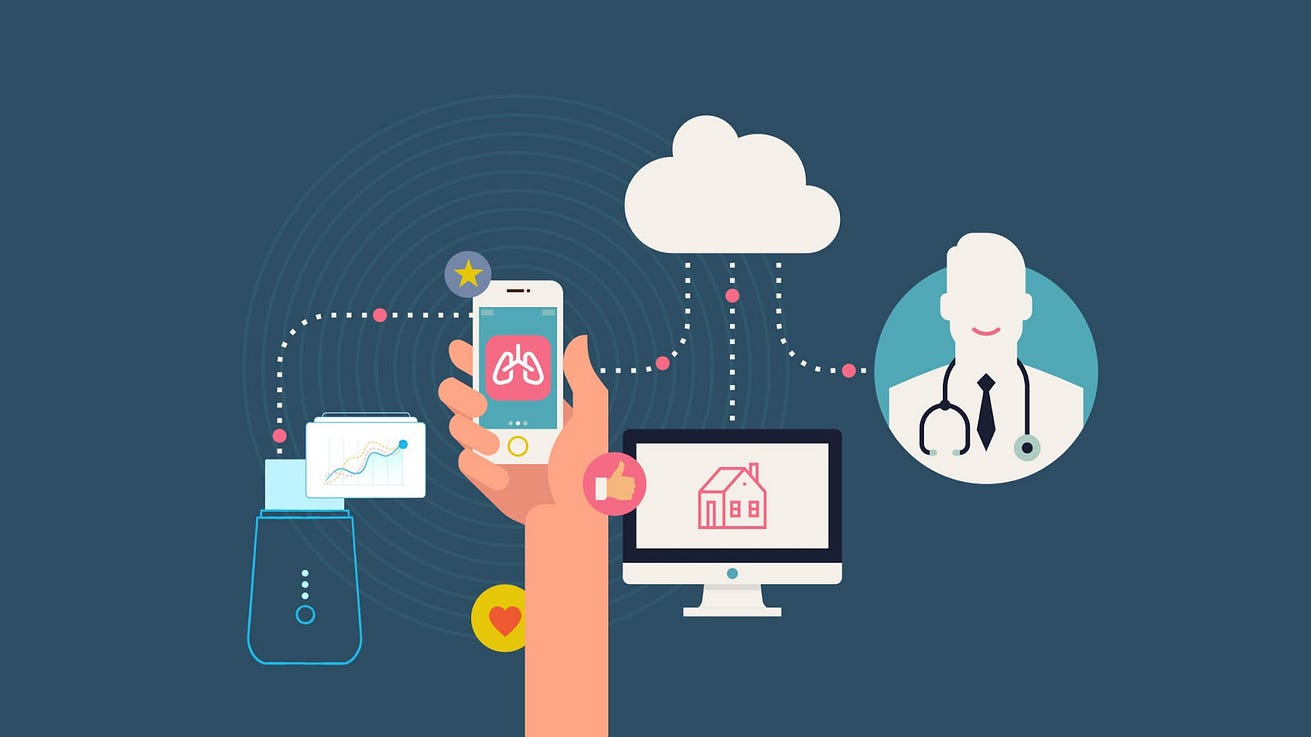Gov.UK
Policy Paper
29 June 2022
infolabhealth
Site version edited by
Joaquim Cardoso MSc.
Digital and Health Transformation — Institute
Digital Health — Unit
July 2, 2022
Our starting point
There have been many attempts to digitally transform the health and social care system over the last 20 years, from which we have a wealth of learning.
This — combined with the glimpse of the future we have witnessed through the health and social care sector’s extraordinary deployment of digital technologies during the pandemic — gives us a great foundation for change.
We fully understand technology’s potential to transform health and social care in applications ranging from virtual wards to vaccine records on a smartphone.
We fully understand technology’s potential to transform health and social care in applications ranging from virtual wards to vaccine records on a smartphone.
New and emerging technologies can support flexible, tailored services that promote people’s health, wellbeing and independence.
They can tackle the huge challenges the sector faces by offering people timely access to physical and mental health services, helping them manage their own health and care.
Digital technologies can reduce pressure on our overstretched workforce, giving them more time for the treatment and caring that only people can do, and help target disparities in access and outcomes.
They can help to shrink the sector’s carbon footprint and improve its resilience to the effects of climate change and future pandemics.
For all these reasons, achieving digital transformation of the health and social care sector is a top priority for DHSC and NHSE.
Our main tools for driving progress to date have been published guidance and investment.
Our digital goals are spread across a large number of existing strategies and guidance publications.
- Recently we have also defined digital maturity for ICSs in What good looks like.
- We have reviewed the integration of primary care through the Fuller stocktake report.
- There will be more digital elements in forthcoming strategies and 10-year plans — in particular those covering dementia, health disparities, mental health, cancer, urgent and emergency care, and women’s health — as well as in the updated NHS Long Term Plan and the Secretary of State’s ambitions for health and social care.
- And alongside this document, we have published a strategy for data-enabling the health and social care sector, Data saves lives, which draws on lessons learned about the power of data from the response to the coronavirus (COVID-19) pandemic.
This data strategy includes a range of commitments that will help connect systems, and details how we will use data flowing through the digitised health and social care system to continually improve services while maintaining the highest standards of privacy and ethics.

We are making investment in the digital underpinnings needed for a sector-wide digital transformation, in particular:
- £2 billion to digitise the NHS, and at least £150 million to support digital transformation in social care, including laying crucial cyber and connectivity foundations. This is the first time we have provided central investment on this scale for digitising social care
- to connect data and enable secure, transformative data-sharing, including investment in data infrastructure at national, sub-national and ICS levels to support day-to-day care, population health, planning and research
- to transform pathways, especially to support the recovery of services post-pandemic and make the NHS App a front door to the NHS
However, for digital technology to reach its vast potential to help people lead a good life, the health and social care sectors need to make progress towards digital transformation together, as a connected system.

There are 3 main barriers in the way:
- we have heard from decision-makers in the health and social care sectors that our guidance is too disparate and it is not clear how it fits together. In short, it does not add up to ‘a clear steer’ for your digital decisions. You need to know what you are being asked to deliver and what we will deliver, and when
- we have heard from industry innovators that we need to make it simpler for you to collaborate with your partners in the health and care system on developing digital solutions that are readily adoptable across the system
- we have heard from finance leaders in the health and social care sector that you want more control of decisions on digital investment, and a longer-term view of funding for strategic investment.
This barrier we have now tackled in Who pays for what, which describes how we will delegate more digital funding to ICSs over time. We began doing so at the start of this financial year
To speed system-wide progress to digital transformation, this document therefore addresses the first 2 barriers. Its purpose is to inform the decisions that ICSs, their constituent members in local health and social care systems, and their tech industry partners are taking now.
This is so that, by 2025:
- the local digital foundations needed to transform services are embedded across the whole of the health and social care system, and digital transformation of services is well under way in places that have laid those foundations earlier
- the entire system is equipped to deliver the benefits of digital transformation to all
‘Section 1: embedding digital technologies’, summarises central actions underway to ensure that digital technologies are integral to the whole of the health and social care system by 2025.
‘Section 2: our vision for a digital future’, is a vision of what the digitally transformed health and social care sector means in practice. It follows the care journeys of 3 people in 2028 to illustrate the control that a digitised, connected system gives them to meet their care needs. We hope this shared vision will help you to shape local plans for digitally transformed services tailored to your population’s particular health, care, support and wellbeing needs.
Appendix A consolidates the different digital goals and investments detailed in separate sector strategies and guidance for the health and social care system into one single action plan for achieving the vision. The digital content woven through all these planning documents forms the entire content of this consolidated plan: it makes no ‘new asks’ of the health and social care sectors.
Appendix B sets out in more detail the plan for our national digital channels — the NHS App and NHS.uk website.
The main goals the action plans are designed to achieve are shown below.
- Digitise
- Connect
- Tranform
Digitise
By March 2025, constituent organisations of an ICS have:
- met a minimum level of digital maturity as set out in What good looks like. Interim milestones are:
- 90% of NHS trusts with electronic health records by December 2023, and 100% by March 2025
- 80% of CQC-registered adult social care providers with digital care records by March 2024
- increased cyber security capabilities, resilience, clinical safety and accessibility
- established digital, data and technology talent pipelines, and improved digital literacy among leaders and the workforce
- ensured all health and social care settings have the right infrastructure and connectivity to work digitally
Connect
Our goal is:
- constituent organisations of an ICS are connected to an integrated life-long health and care record by 2024, enabled by core national capabilities, local health records and shared care records, giving individuals, their approved caregivers and their care team the ability to view and contribute to the record
- every ICS has implemented a population health and planning data platform, and business intelligence tools by 2023
- data for research and development is available through a federated network of trusted research environments (TREs) by March 2025
Transform
Our goal is:
- the NHS App will be a front door for interacting with the NHS and receiving personalised services, with 75% of adults registered for the NHS App by March 2024 and benefitting from an array of new features
- prevention and detection technologies are used to protect the 20% of care home residents who are identified as at high risk of falls by 2024
- the right assurance and commercial foundations are put in place by 2025 to stimulate a thriving innovation ecosystem that fosters collaboration between the health and social care sectors and the tech industry
This document provides a vision for the future of health and care while summarising the commitments that will help both systems digitise, connect and transform.
Originally published at https://www.gov.uk.
Names mentioned
Sajid Javid, Secretary of State for Health and Social Care
Dr Timothy Ferris, National Director of Transformation












